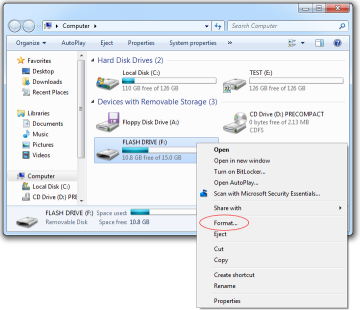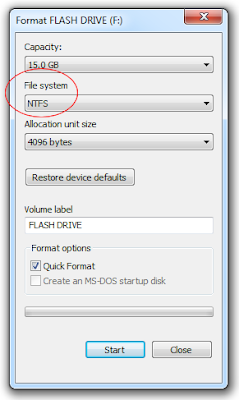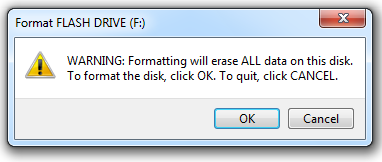WHY CAN’T I COPY LARGE FILES OVER 4GB TO MY USB FLASH DRIVE OR SD CARD?
The capacity of your external flash drive or SD card is large: 8GB, 16GB, or more. There is enough free space on the drive. You can copy the smaller files to the external drive just fine. Yet, when you attempt to copy a large file (4GB or larger) to the external drive, Windows gives you an error (such as: There is not enough free space on the drive, or similar.) Does this sound familiar?
If you experience such a problem, most probably it’s caused by the fact that your external drive or card is formatted with the FAT32 file system. This type of a file system has a built-in limitation on the size of the files that it may contain. Although the total size of the files that you can copy to a FAT32 drive could be as large as 2TB (or the physical capacity of the drive, whichever is smaller), the size of each individual file may not exceed 4GB.
This limitation may sound silly: why would anyone design a system that would not allow for the larger files? The problem is, when the FAT32 file system was designed (that was back in the days of Windows 95), no one anticipated that we would have such large files in use today. Or, maybe the designers hoped that by the time such large files become common, the use of the FAT32 system would be replaced by the more modern systems.
In any case, how to solve the problem of copying the 4GB files? Easy: you need to replace the FAT32 file system on the drive with a more modern one, such as NTFS or exFAT. These newer file systems not have the 4GB file size limitation! Scroll down this page for the instructions on how to change the file system.
Which file system is better, NTFS or exFAT?
They both a pretty good, but which one to choose depends on how else you are going to use the external drive or SD card.
The NTFS file system is supported by all modern versions of Windows (including such dinosaurs as Windows XP, Windows 2000, and Windows NT), and it also supports many other functions not supported by FAT32: file security, encryption, compression, etc. However, if you plan to use the external drive with non-Windows devices (such as an Android tablet or a Mac computer), it would not be recognized by such devices out of the box, and you would need to install additional software or tweak their settings quite a bit to make them work with the NTFS drives.
The exFAT system is not as advanced as NTFS, but it has more support on the non-Windows platforms. For example, many Android phones and tablets, as well as the recent versions of macOS support exFAT devices pretty well.
How to change the drive from FAT32 to NTFS or exFAT format?
Let’s show how to it for NTFS first. There are several ways to go. If the drive or card is empty or contains no important files of yours, the easiest way is to use the Windows Format command to format the drive with the NTFS file system. Specifically:
1. Attach the external flash drive to the computer, wait for Windows to recognize it and assign a new drive letter to it.
2. Open the Computer folder and locate the drive letter assigned to the flash drive you want to format with NTFS (in the example below, it’s drive F:)
3. Before continuing, open the drive in a window and make sure it’s empty or does not contain any important files, because after you format a drive, all information that was on it will be erased! If there are files on the drive that you want to keep, take this opportunity to copy them over to the hard drive or some other drive.
4. If you are sure that the external drive contains no important files of yours, go back to the Computer folder, and right click on the icon of the external drive:

5. Select Format from the menu, and then choose the formatting options:

6. Make sure to select NTFS in the File System drop-down list. That’s what determines the kind of a file system that the drive should have. Also, you may want to select the Quick Format option, which should speed up the formatting process quite considerably.
7. Press Start, and Windows should warn you once again about erasing any existing information on the drive (see step 3 above). Again, if you are sure the drive does not contain any irreplaceable documents, confirm that you want to proceed with the formatting:

8. If you’ve selected the Quick format option, the formatting should take no longer than a minute or two.
As a result, you should have the same drive, but now it should have the NTFS files system on it. Now you should be able to copy the files larger than 4GB to the drive just fine.
In addition to formatting a drive with the NTFS file system, Windows also offers a way to convert a FAT32 drive to NTFS. The difference is that the conversion process would keep the existing files on the drive. See Windows Help and Support of your computer for the instructions on how to do the conversion.
What if I want to use exFAT instead of NTFS?
The steps to change to exFAT are the same as for NTFS, you only need to select exFAT in the dropdown box instead of NTFS.
How to Copy Large Files Over 4gb To any USB Pendrive or SD Card